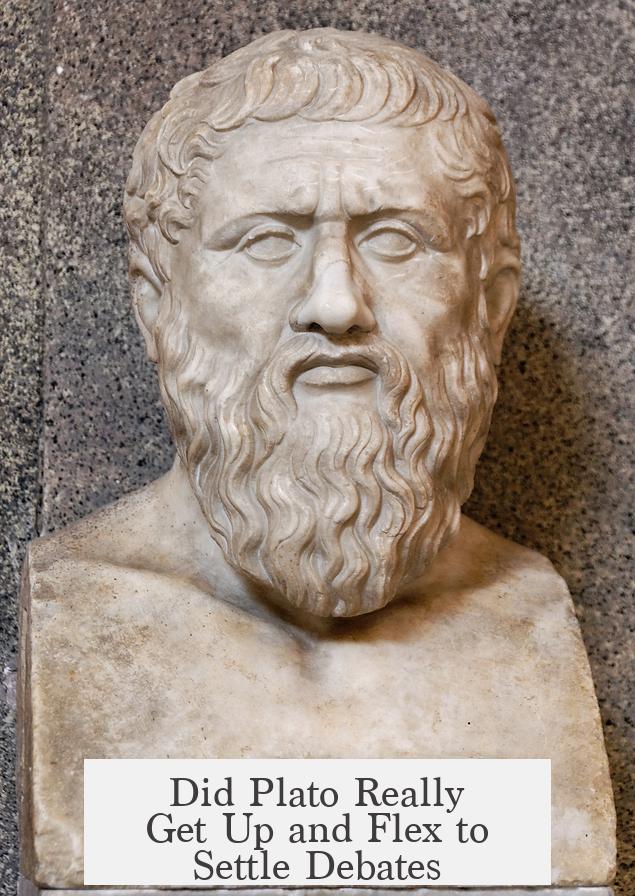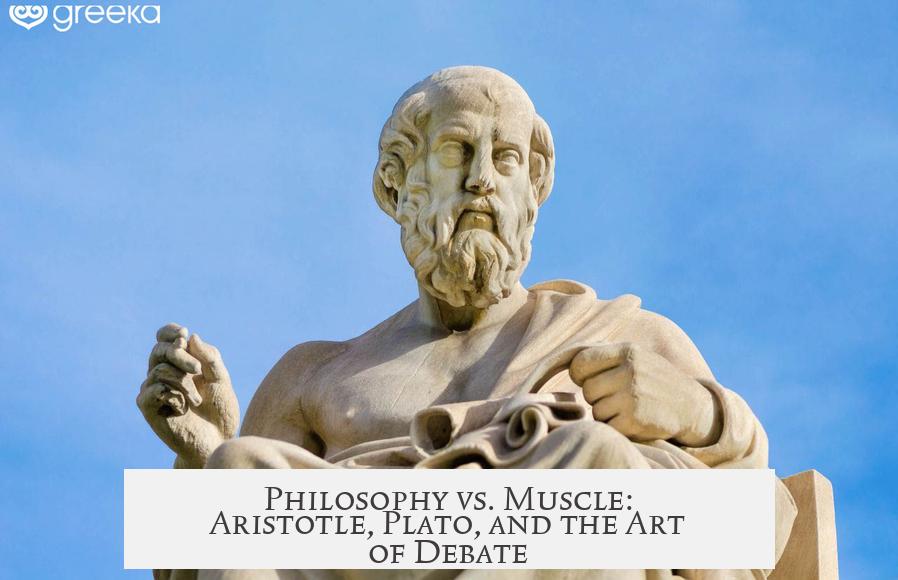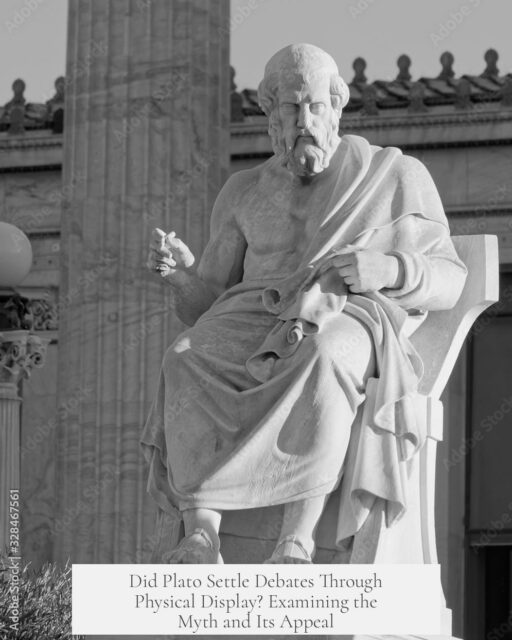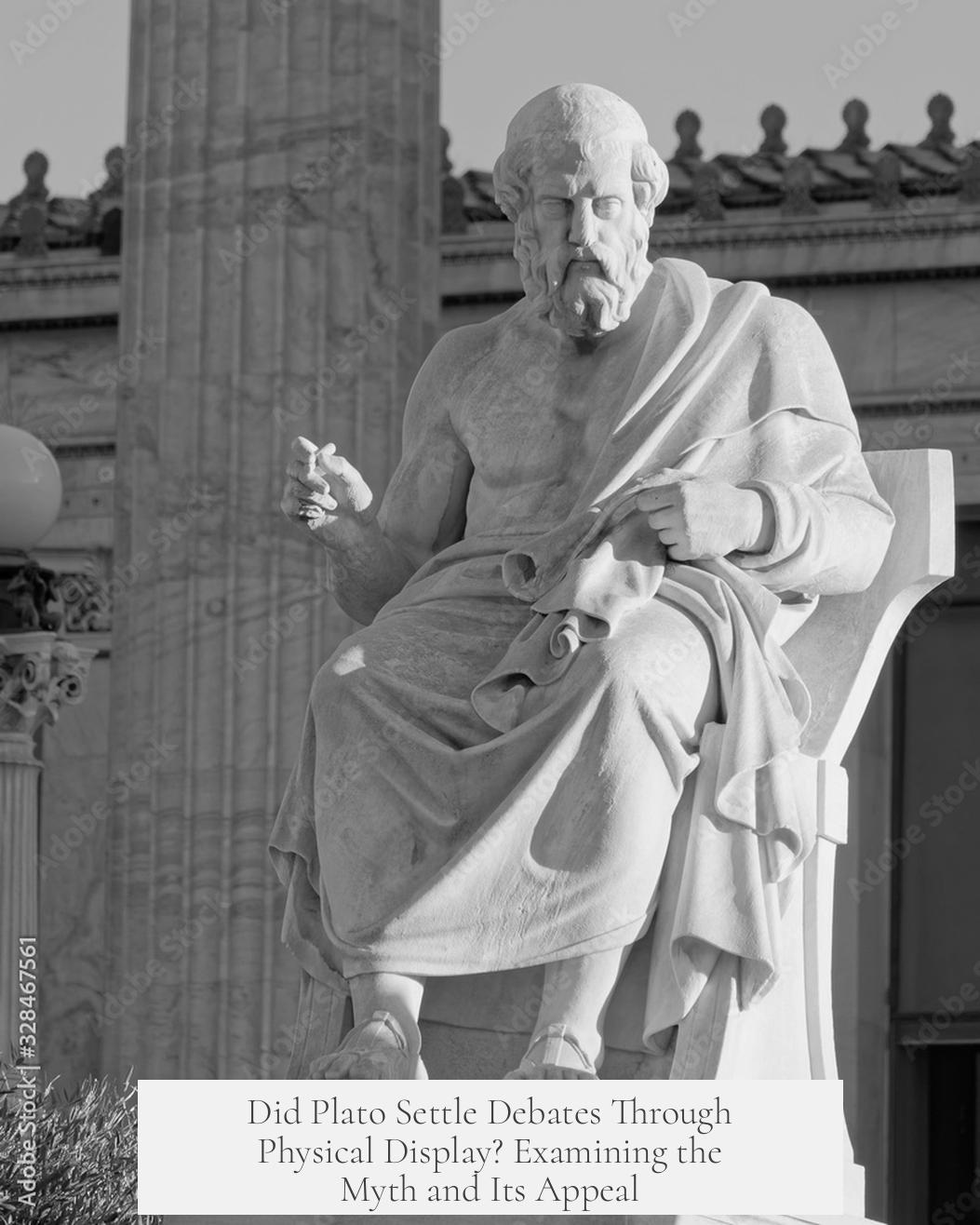Plato did not literally get up and flex to settle debates. While this image fits a modern meme culture, it lacks historical evidence. However, Plato’s connection to wrestling is plausible, supported by ancient sources that link him to competitive sport and physical training. This fact hints that the meme may carry a grain of truth but exaggerates it for humor and relatability.
Ancient writer Dikaiarchos, from the late 4th century BCE, claims Plato wrestled in the Isthmian Games, a prestigious athletic event of the time. Diogenes Laertios preserves this report and adds that Plato engaged in painting and poetry. A linguistic note from Alexander Polyhistor suggests Plato’s nickname relates to “broad” or “flat,” possibly describing his physique, which fits a wrestler’s build.
Despite this, no historical text records Plato using physical display like flexing muscles to win arguments. His reputation rests on dialectical method and written dialogue, not physical prowess in debates.
The meme portraying Plato flexing to settle disputes seems modern and recent, emerging only in the last week without trace in earlier records or meme databases like KnowYourMeme.
Regarding Plato’s relationships, his dynamic with Aristotle often appears oppositional. Yet, Aristotle’s critiques don’t fully negate stable respect or collaboration. The popular image of their debate, shown famously in Raphael’s “School of Athens,” might inspire humorous reinterpretations such as the flexing meme.
| Fact | Details |
|---|---|
| Wrestling involvement | Plato wrestled competitively; believed to have competed in the Isthmian Games |
| Poetry and arts | Plato wrote poems and applied himself to painting |
| Nickname origin | “Platōn” linked to a broad physique, possibly referencing wrestling build |
| Meme origin | Recent internet meme, no earlier historical basis |
- Plato’s wrestling background is supported by ancient sources but not linked to using physical flexing in debates.
- The meme of Plato flexing to settle arguments is a recent online invention.
- Plato’s intellectual method relies on dialogue and reason, not physical intimidation.
- Artistic portrayals may shape modern perceptions of his relationship with Aristotle.
Did Plato Really Get Up and Flex to Settle Debates?

The short answer is: No, Plato did NOT get up and flex to win arguments—but it’s a fun idea to imagine! This quirky claim has been making some recent internet rounds, painting Plato as not only the philosopher king of abstract thinking but also a literal powerhouse ready to flex his muscles in a debate showdown. But is there any truth to it? Let’s untangle this mix of myth, history, and memes.
Wrestling with the Truth: Plato’s Sporting Side
First off, did Plato have any connection to wrestling at all? Surprisingly, yes! Ancient sources like Dikaiarchos, a 4th century BCE writer, suggest Plato wasn’t just holed up in the Academy scribbling away. He may have been a competitive wrestler. According to Dikaiarchos in On Lives, Plato wrestled in the Isthmian Games, a major athletic festival in Greece. Another ancient scholar, Alexander Polyhistor, even linked Plato’s name to wrestling because “Platōn” draws from the root “plat-,” meaning broad or flat—which fits a wrestler’s broad, sturdy figure.
So while Plato probably didn’t settle philosophical tiffs with a quick flex, he did grapple—literally—with athletic contests. This gives the meme a little sprinkle of authenticity, but only that. No record suggests he ever used his muscles to sway opinions in debate.
The Meme Machine: How Did This Idea Start?
If you searched far and wide, you’d find zero signs this flexing Plato meme existed before last week. Yep, it’s shockingly fresh. It hasn’t even earned a spot on KnowYourMeme yet, indicating it’s a very new internet invention. The viral nature of social media means that even a totally new, playful bit of content can explode quickly. Did a clever TikTok user or a witty Twitter philosopher spark it? We don’t exactly know.
But one thing’s for sure: meme culture loves to blend historic fact with ridiculous flourishes. So far, the “Plato flex” seems to be a perfect storm of humor, ancient wrestling fragments, and modern internet flair. It’s a reminder that history is often reimagined in the digital age to keep things light and relatable.
Philosophy vs. Muscle: Aristotle, Plato, and the Art of Debate

Part of why this meme gained traction might lie in the way we think about the philosophical giants Plato and Aristotle. People love to picture their relationship as one of smackdown-level rivalry. The famous fresco by Raphael—the “School of Athens”—immortalizes this idea, showing Plato and Aristotle in what looks like a heated debate. That image fuels a fantasy: what if debates had more flexing and less footnotes?
In reality, though, the tension between the two philosophers is far less dramatic. Aristotle critiqued some of Plato’s ideas, yes, but there’s little evidence they were bitter enemies. Their intellectual relationship was more like a respectful dialogue—or even a teacher-student dynamic—than a WWE fight. So imagining Plato flexing to tune up a debate might be fun, but it doesn’t reflect their real interactions.
Why Do We Love the Idea of a Flexing Philosopher?
At first glance, picturing Plato in hand-to-hand grappling suits may seem absurd, but it ticks a few boxes humans love: it mixes brain and brawn, it offers humility to the often “high and mighty” image of philosophers, and it adds humor to serious history.
This notion taps into an age-old question: can intellectual power coexist with physical strength? Plato lived in an era when gymnasium culture was integral to education. A rounded education involved both mind and body. Historical fragments supporting Plato’s wrestling add a fresh angle that philosophers aren’t just ethereal thinkers—they can be athletes too.
Practically speaking, this helps modern readers relate better to Plato. Instead of some distant figure draped in togas pondering metaphysics, we glimpse a human being who likely experienced physical competition, discipline, and possibly the confidence derived from physical fitness.
Putting the Myth into Context
Let’s clear something up. There’s no ancient account of Plato flexing muscles mid-debate to shut down a rival. Philosophical discourse in Ancient Greece was all about rhetoric, dialectic reasoning, logic, and charm—not brute force. So that vibrant image is a meme-fueled exaggeration.
However, consider this practical advice: philosophical arguments are won by insight and clarity, not by showing off biceps. Still, a healthy body supports a healthy mind, and Plato probably knew that well.
Closing Thoughts: What Can We Learn?
“Philosophy and wrestling may seem worlds apart, but Plato reminds us that intellect and strength can both shape character — even if only one settles debates.”
The meme of Plato flexing to settle debates isn’t a genuine historical fact but a playful mix of actual wrestling history and modern humor. It nudges us to reconsider the multidimensional shape of philosophers and their lives.
Next time you argue a point, whether in a café or online, ask yourself: Would Plato have flexed himself to win? Probably not. Yet, having the confidence of a wrestler might just help your poise. Strengthen your arguments like a wrestler trains their body—with discipline and strategy, not just showmanship.
In the end, imagining Plato standing up and flexing might not settle any debates. But it sure flexes the imagination muscles!




